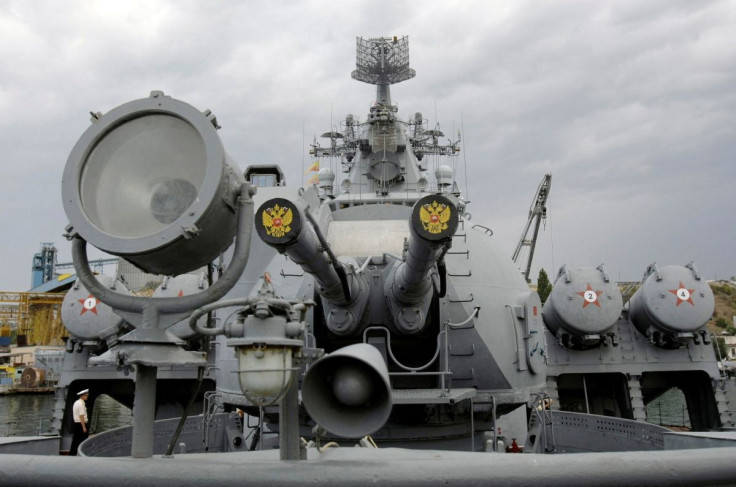Russia Sends Warships, Submarines To Black Sea Raising Fears Of New Attack
KEY POINTS
- The Novorossiysk base has been considered a relatively safe harbor for Russian warships
- An unusual spike in Russian naval activity in the Black Sea has preceded extensive missile strikes on Ukraine in the past
- Departure of amphibious ships suggests that the movement may not be limited to missile strikes
In a rather unusual move, several Russian warships and submarines reportedly left the Novorossiysk naval base in Russia on Wednesday and sailed further into the Black Sea closer toward Ukraine, adding to fears that Moscow may seek to expand its war aims.
While the possibility that Moscow is planning a new offensive operation against Ukraine cannot be ruled out, defense analyst HI Sutton writes in Naval News that Russia may even want to try an amphibious landing in southwestern Ukraine to expand its war goals.
While an amphibious landing may seem unrealistic given the present state of Russian forces pinned down by Ukrainian advances, Sutton suggests that Moscow may attempt to target southwestern Ukraine to establish a land bridge to Transnistria — a Russian-supported unrecognized state in Moldova that borders Ukraine.
Moldova has already expressed fears of a possible push by Russian forces to secure a land corridor to Transnistria through Ukraine.
Apart from all three Project 636.3 Improved-Kilo class submarines that were present at the Novorossiysk naval base, the en-masse naval ship movement included the Pyotr Morgunov, the largest amphibious ship in the Black Sea, and the Project 11711 Ivan Gren class landing ship.
Since the Oct. 2022 attack on the Kerch Bridge, which connects mainland Russia to occupied Crimea, the amphibious ship Pyotr Morgunov has been involved in the delivery of supplies to Sevastopol.
With the Kerch Bridge yet to be fully operational, Russia has pressed its navy's landing ships for transport service, but Sutton points out that that warship movement may be more than a mere resupply mission, given that the three submarines were sailing at the same time.
Sutton adds that the mass exit from the Novorossiysk naval base may also be a drill to test crew and asset readiness as a precaution against a possible Ukrainian attack.
Unlike the Sevastopol base, the headquarters of Russia's Black Sea Fleet, which came under a massive Ukrainian drone attack in Oct. 2022, the Novorossiysk base has been considered a relatively safe harbor for Russian warships.
As reported in Sept. 2022, the Russian Navy had moved its fleet away from the range of Ukrainian missiles to the safety of Novorossiysk after the dramatic sinking of the Black Sea Fleet's flagship Moskva in April 2022.
With the sinking of the Moskva, the Black Sea Fleet has largely played a dormant role, only carrying out missile strikes on Ukraine without venturing out too far away from the safety of their harbors.
Driven by the increasing threat from Ukrainian drone strikes, Moscow has also increased security at its naval bases, including the use of floating booms to protect against attacks by uncrewed drones. However, with a reported attack on an oil terminal in Nov. 2022, Ukrainian forces have demonstrated their ability to threaten the Novorossiysk, which presents further challenges to Russia's Black Sea Fleet.
Although an unusual spike in Russian naval activity in the Black Sea has preceded extensive missile strikes on Ukraine in the past, Sutton points out that it will be unique for all three submarines to be involved in a single operation.
Since their withdrawal from the Crimean base, the Russian subs have returned to Sevastopol to load Kalibr missiles, however, the defense analyst adds that three of the five subs have remained in Novorossiysk for weeks.
The reported departure of amphibious ships along with the submarines suggests that the movement may not be limited to missile strikes, Sutton said, adding that some form of an amphibious operation cannot be ruled out.

© Copyright IBTimes 2025. All rights reserved.





















